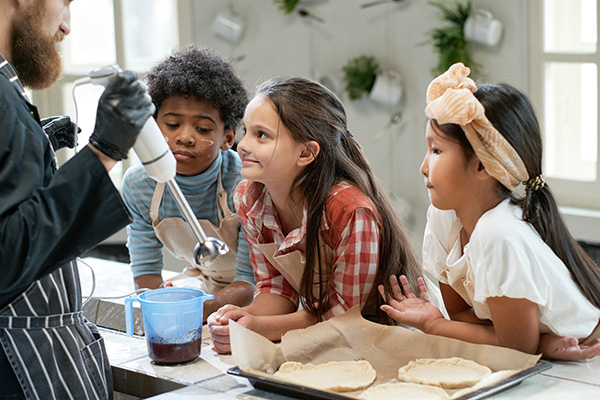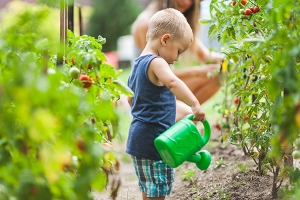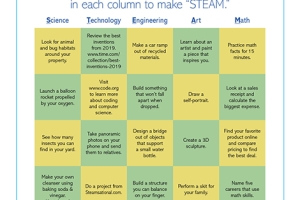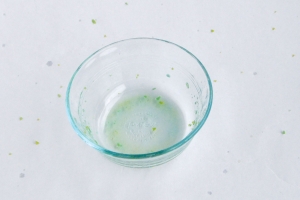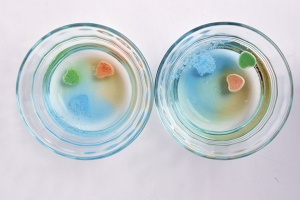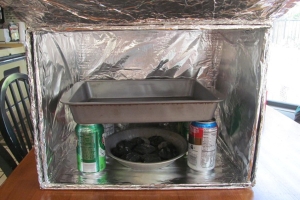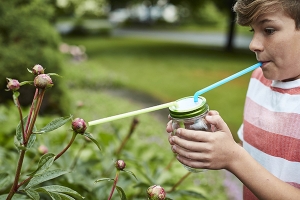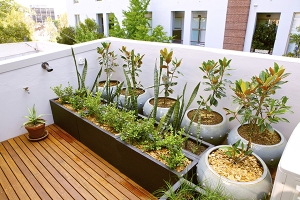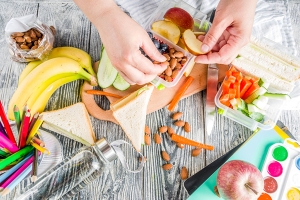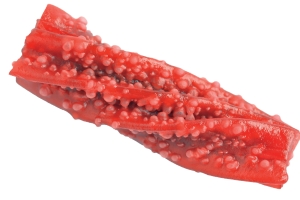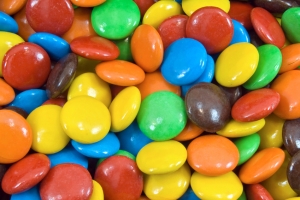
Many science experiments involve candy. Follow the directions below to find out how you can use science to determine how candies get their colors.
Materials:
Coffee filters
Clear jars or cups
Pencil
Tape
Scissors
Measuring cup or pitcher filled with water
Colored candies (M&Ms, Skittles, or Reese’s Pieces work well)
To Do:
1.) Cut the coffee filters into several strips. Each strip should be about 1” wide and just slightly longer than the height of your cup or jar.
2.) Fill one cup with a small amount of water.
3.) Choose one of the brown or purple candies.
4.) Dampen the candy by briefly dipping it in the water.
5.) Shake off any excess water and then smudge the candy on one of the filter strips, approximately 1” from the bottom.
6.) Fold the opposite end of the filter over a pencil and secure it with a piece of tape.
7.) Lay the pencil across the top of a second cup so that the strip hangs down inside the cup.
8.) Use a pitcher to carefully add enough water to the cup so that the water just touches the bottom of the filter strip. The water should not touch the candy smudge.
9.) Now watch closely as the water begins to travel up the filter paper. What do you notice? What happens when the water reaches the candy smudge? Keep watching for several minutes. Do you see any other colors on the filter?
10.) When the water reaches the top of the filter paper, remove it from the water and set it aside to dry.
11.) Repeat steps three through nine with some of the other candies.

Now Try This:
Repeat the investigation with different types of candies. Do you get the same result? What might happen if you dissolved a small amount of salt in the water? Try it and find out.
What’s Going On?
Look closely at the list of ingredients on a bag of M&Ms or Skittles. In addition to traditional ingredients, like chocolate and sugar, you may notice Red 40 or Yellow 6. These are the dyes that give the candies their colors. By using a process called chromatography, you can determine which dyes were used to make the different candies.
Chromatography is a method for separating mixtures, such as candy dyes, into individual parts. In this case, the separation is accomplished by using a coffee filter and water. As the water travels up the filter, it carries the dyes along with it. Different colors of dye travel at different rates due to their size, their solubility, and their attraction to the filter paper. The color molecules that are the most soluble in water or that have the least attraction to the paper travel up the paper the fastest. Those color molecules that have less solubility or that are more attracted to the paper travel more slowly.
-----------------------
Debbie DeRoma is the former education manager for the Reuben H. Fleet Science Center.
